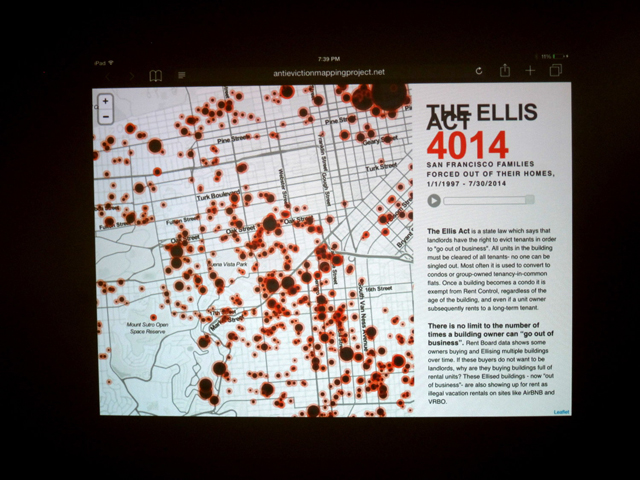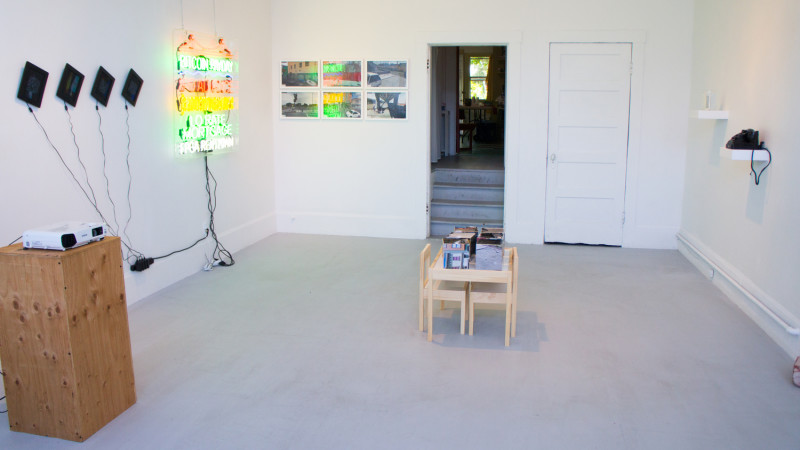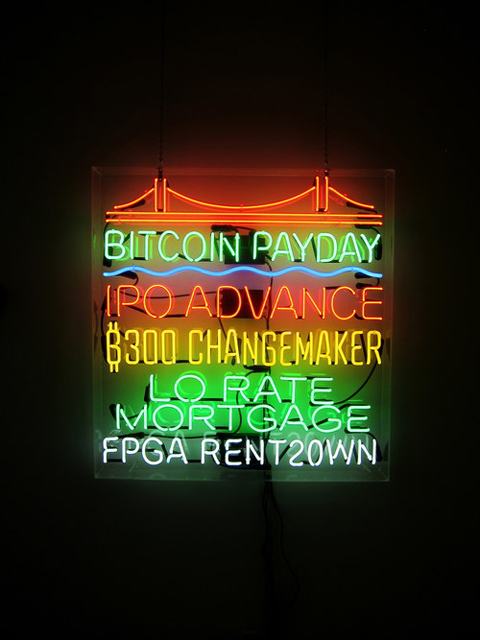In the Bay Area, one can hardly read the news — or walk a city block — without bumping into the topic of gentrification. An exhibition curated by Dorothy Santos, The Dissidents, the Displaced, and the Outliers presents a group of local artists whose work addresses this issue, along with its somewhat unexpected connection to surveillance.
The decision to split the show between San Francisco’s Incline Gallery and Oakland’s Random Parts is timely; this year, Oakland surpassed San Francisco for the second fastest rent increase in the country. In nuanced approaches to the Bay Area’s most pressing and complicated issues, the artists of The Dissidents remind us that the relationship between technology, power and society remains multifaceted.
At Random Parts, COLL.EO’s City Blocks (2014) mimic children’s building blocks, yet depict images of people sleeping on sidewalks and urinating in public. These potentially invasive photographs are complicated at times by the shadow of a Google Street View car and the marks of a browser’s interface, virtual directional arrows and location stamps. Left implicit is the suggestion that homelessness is a possible consequence of the very technology capturing its likeness.

Shown in both venues, interactive info graphics by the Anti-Eviction Mapping Project visualize data of no-fault evictions from 1997 to 2014. Projected on a wall, a map of San Francisco explodes in red and purple dots, rapidly increasing in the most recent years. The info graphics are engaging and sobering, a presentation of facts in an emotionally charged arena.
Similarly, the work of Eliza Barrios serves up practical information through Quick Response (QR) codes in two site-specific installations. When scanned with a smartphone equipped with the proper app, Barrios’ codes link to YouTube videos, TED talks and news articles related to gentrification in the Bay Area, including the viral video from Buzzfeed, “What It’s Like To Lose Your Home To Gentrification.”



